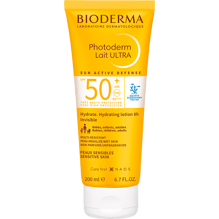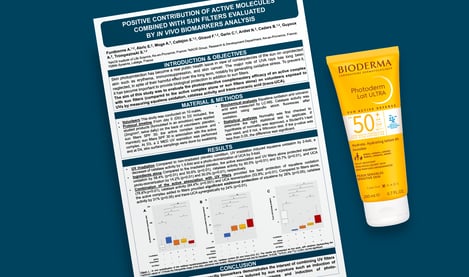Chronic exposure to ultraviolet (UV) irradiation causes immunosuppression, photoaging, and carcinogenesis. A cascade of reactions occurs upon UV exposure of human skin, including the generation of reactive oxygen species (ROS), oxidation of lipids and proteins, DNA damages, p53 mutations, sunburn cell formation, release of cytokines and matrix metalloproteinases (MMPs). UV rays have effect on the cutaneous immune system by causing its suppression which can make the organism more vulnerable to bacterial, viral or fungal infections and to the development of cutaneous cancers. This action is linked to the migration of Langerhans cells from the epidermis, key cells of the cutaneous immune response and a reduction in the antigen presentation function. In addition, under UVB exposure, urocanic acid, a natural filter present in the stratum corneum, is trans-isomerized to form UCA-cis which also contributes to local immunosuppression. The skin barrier function is also affected by solar radiation. The stratum corneum (SC), which is the first line of defense against environmental exposures, is modified by solar radiation, with alterations in its mechanical properties and related barrier function mechanisms including filaggrin proteolysis. UV rays also affect the skin microbiome, whose protective role is essential to prevent photo- immunosuppression and good skin health.
Skin photoprotection has become a real public health issue. As a complex ecosystem, it is necessary to protect the skin from the effects of UVA, in addition to UVB. For many decades the SPF has assessed in vivo sun protection using UV-induced erythema as an endpoint, but it does not accurately reflect all photoprotection benefits.
In our research activities, we have sought to go further in evaluating the efficacy of sunscreen products by going beyond the SPF, thanks to in vivo quantification of skin biomarkers which reflect activation of cutaneous biological pathways and can be analyzed from non-invasive skin samples.
The aim of our in vivo study was finally to evaluate the photoprotective complementary efficacy of an active complex with sun filters on volunteers exposed to UVB and UVA by measuring squalene oxidation, trans-urocanic acid (trans-UCA) and a pool of amino-acids by LC-MS and catalase activity by quantification of resorufin fluorescence. Moreover, the impact of UV and the protective effect of sun filters coupled with active complex on human and bacterial proteins was analyzed using "shotgun proteomics" (LC-MS/MS).
In this context, we confirmed the interest of providing specific ingredients whose activity is complementary to that of UV filters to have a global full photo-protection against the negative effects of UV. A better understanding of in vivo cutaneous effects of solar irradiation is essential to optimally assess the efficacy of products and thus develop suitable sun photo-protection products.
 Arnaud FontbonneNAOS , France
Arnaud FontbonneNAOS , France Baba TemeNAOS , France
Baba TemeNAOS , France Elise AbricNAOS , France
Elise AbricNAOS , France Sylvie CallejonNAOS , France
Sylvie CallejonNAOS , France Félix GiraudNAOS , France
Félix GiraudNAOS , France Nathalie ArdietNAOS , France
Nathalie ArdietNAOS , France Dr. Sandra TrompezinskiNAOS , France
Dr. Sandra TrompezinskiNAOS , France





